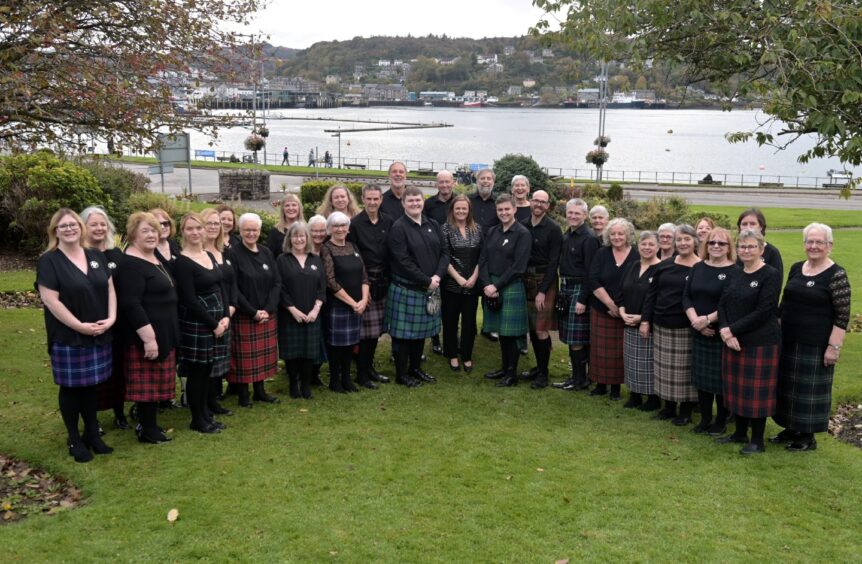Every year at the Royal National Mod, the stakes are high – especially for those vying for the coveted Gold Medal in Gaelic song, a prestigious honour awarded to just one male and one female voice.
As the year begins, hundreds of ambitious performers eagerly declare their intention to enter this prestigious competition.
But come July, after intense scrutiny, only about 40 finalists remain – each vying for the chance to shine.
This year’s spectacular showdown unfolded at the Corran Halls in Oban on Wednesday night, broadcast live on BBC Alba.
The atmosphere was electric as Ryan Johnston from Islay was crowned the male champion, while the remarkable Alice MacMillan from Lewis took home the title for the women’s category.
As part of their prize for winning the coveted Gold Medals, both champions will serve as ambassadors, with exciting opportunities to perform at Gaelic festivals around the globe, including a once-in-a-lifetime trip to America.
Following their triumphant victories, The Press and Journal caught up with the Gaelic singing champions to uncover the secrets behind their incredible achievements.
‘Commitment and confidence is key to Mod success’
Gaelic singing is deeply woven into Ryan Johnston’s family heritage.
His aunt, Arlene McKerrell, leads the Islay Gaelic Choir and has dedicated years to nurturing children’s choirs on Islay.
Ryan’s grandmother Margaret McKerrell and mum Tracey Johnston are also proud members of the same choir.
His other aunt, Morvern Gage, conducts the Makaton Gaelic Choir and oversees the music department at Oban High School.
Clearly, it takes a vibrant community to cultivate a Gold medallist.
“I’ve received incredible support from so many people,” he said.
“It’s been seven years since I last performed as a soloist at the Mod. Joining the Glasgow Gaelic Choir really encouraged me to aim for the Gold Medal.”
Ryan’s journey began early, first competing in a Gaelic poetry competition at just six years old and started singing two years later.
Now at 23, he reflects on the long road to his recent triumph.
After moving from Islay to study in Glasgow, Ryan now works in the whisky industry but remains actively involved with the Islay Gaelic Choir and Glasgow Gaelic Musical Association.
“For me, the key was immersing myself in Gaelic,” he explains.
“I had a fantastic tutor, Catriona MacRae from Lewis. We’ve met twice a week since January, and her guidance has been invaluable.”
Ryan credits the support of DI Brown, Kenny Thomson, and Iseabail Mactaggart for helping him choose the perfect song – ‘Birlinn Challa Christaich’.
“That song choice was crucial because I felt a connection to it. I was proud of it and understood its meaning,” he said.
Ryan believes the essence of success lies in self-belief and taking risks.
“Joining a Gaelic choir can propel you forward; their belief in you makes a difference,” he says.
“Winning is an incredible feeling, and competing at the Mod has been a dream. I never anticipated I would win, but it all comes down to hard work and the support you receive.”
Ryan’s aunt Arlene noted that her son approached the Gold Medal competition like an exam.
“Ryan treated this competition as if he were taking a test. Having competed at the Mod since he was a young boy, he learned how to navigate the process and understand what the adjudicators were looking for,” she said.
‘Learn words, but share the feeling and emotion of the song’
Raibert MacCallum who is attending his 78th Royal National Mod this year, also had some interesting advice.
He said: “Learn the Gaelic words, learn the music – but most of all learn to feel what you are singing.
“Every sound is important. Learn words, but share the feeling and emotion of the song.”
The Mod veteran is known for his catchphrase “let the song sing itself” and is a popular conductor of the massed choirs for the searing ‘Sine Bhan’, a traditional Gaelic air.
Raibert said: “Sine Bhan is a war song and people often sing it like an anthem. But it is a song of longing and worry.”
He added: “Your life is enrichened when you are part of the language and culture of Gaelic.
“I have been doing this for 78 years, and I would not have missed a moment of it.”
Joy Dunlop and Duncan MacNeil shared their road to Gaelic with The Press and Journal yesterday, as our coverage of the largest Gaelic language and culture festival continues.
A full list of competition winners can be found on the Royal National Mod website.
Have you signed up for our Oban and Hebrides newsletter?
Every week our Oban-based reporter Louise Glen curates the best news in the area.
Sign up here for local news straight to your inbox.




Conversation